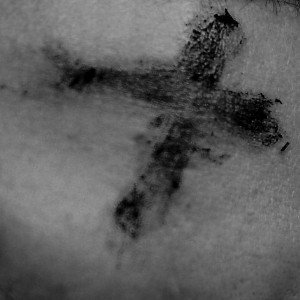
Photo by gocyclones (Matt Millard) from Flickr, Reproduced under Creative Commons Attribution-NonCommercial-ShareAlike 2.0 Generic License
I enjoyed a year as a priest-in-charge of one of the more Anglo-Catholic parishes in the Diocese of Niagara. Its forms of worship were new to me, and I had to spend much time preparing for the ceremonies that were so important to that community. That meant reading and re-reading the great book that leaves no detail unwritten concerning one form of Anglo-Catholic customs: Ritual Notes.
Its attention to detail is extravagant (seminary did not teach me details about how to build an altar), and that helped me to be prepared to learn how the parish I served varied from it. Even in parishes where many of the ceremonials would be deeply outside of the tradition, it helps me to picture a way of performing a rite with reverence and deep caring, and so I re-read portions of Ritual Notes frequently.
One of the reasons I so enjoy re-reading are the parts that are at once funny on one level and revealing on another level. There are a few moments like these, and I’m going to share some here from time to time. One of my favourites is a part of the notes for how to do Ash Wednesday just right in the Anglo-Catholic tradition (Notes 337 to 342).
After sharing details about vestments (including some that most parishes have never seen!), and the precise form of aspersing (sprinkling with holy water) and censing (wafting incense) the ashes as they are blessed, the notes discuss the manner of how the ashes should be imposed. [Please pardon the gender assumption of the notes: that part hasn’t been altered in any of the many editions since the first of 1894.]
In imposing the ashes, the Cel[ebrant] takes a small quantity of the ash between his thumb and forefinger which he rubs together, and then with his thumb traces a cross on the forehead of the recipient as he repeats the formula audibly and impressively. (339a, my emphasis added)
The first time I read it, I was amused by those last three words—“audibly and impressively.” I had a mental picture of Christopher Plummer, in full stentorian voice, saying our contemporary words “Remember you are dust, and to dust you shall return.” (BAS 285) The adjectives feel at first like they have more in common with a stage direction than with anything connected with the Church, and I can still read them in a silly voice and make myself laugh.
And yet.
And yet they are the qualities needed for that sentence, that moment. As the ashes are traced on my forehead—and as I have the privilege of tracing them on others’ foreheads—it’s not a moment to be hurried through. I want to hear the reminder of my mortality as the corporeal symbol is put on my forehead. And as far as “impressively” goes, well, the voice needs to match the gravity of that moment: just as the ashes are imposed the words need to sound right. What better words could be used to describe how the voice should be used? What other words could capture the reverence, the significance of the reminder we seek out but once a year?
Audibly and impressively. How will the ashes shape our lives, in Lent and beyond? How will the reminder of God’s unending grace, enacted in the liturgy, remain with us? What will we hear of God, and how will God make an impression on our lives?
